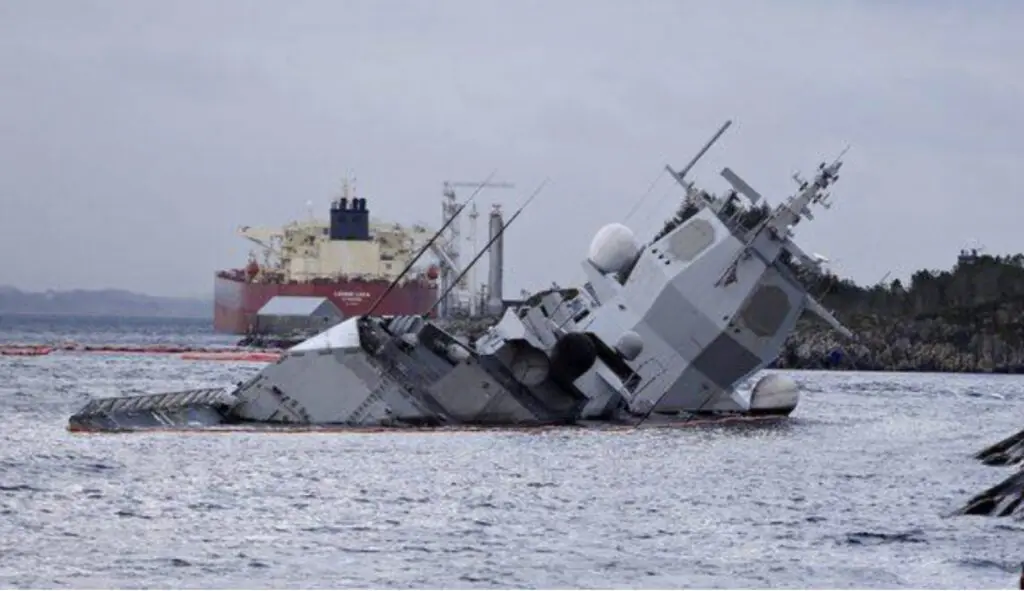The Weekly Reflektion 20/2023
In our daily routines we expect to interface with others with a similar understanding of what is an ‘acceptable’ risk, for example when we are driving on the roads. Different groups may however have different levels of ‘acceptable’ risk. These worlds sometimes meet with unfortunate consequences.

The Helge Ingstad after the collision with the TS Sola
Are we aware of the dangers when our view of ‘acceptable’ risk is different to others?
At the Reflekt Breakfast Seminar on 3rd May we focused on Situation Awareness, and the Helge Ingstad collision with the TS Sola on 8th November 2018 was used as an example. The subject of what is considered as ‘acceptable’ risk was broached. The Norwegian Navy currently has a shortage of qualified navigators, and this has led to the necessary step of, ‘clearing’ of Officers of the Watch (OOW) with less experience than previously. The Commanding Officer of the Helge Ingstad cleared the OOW who was on the bridge at the time of the collision as competent to do his job. He had 9 months experience compared to the historical requirement of 2-4 years’ experience. The bridge crew as a whole had an average age of 22 years, and several were new conscripts.
In addition to his normal responsibilities, the officer of the watch was also supervising the training of two trainees in addition to the normal bridge crew of five. The focus of the training was visual navigation and radar use was minimised. The frigate’s Automatic Identification System (AIS) was set to passive mode, which meant that other boats in the fjord could not identify it easily. In summary, the inexperienced OOW was given additional tasks to his normal tasks that arguably distracted his attention and was required to use fewer navigation aids.
In the oil and gas industry we use a term ‘as low as reasonably practicable’ (ALARP) to describe a risk level that is both acceptable and that mitigating actions have been implementedto lower risk further if practicable. Considering the ALARP principle for the Helge Ingstad when sailing in relatively heavy trafficked waters, with an inexperienced bridge crew, the decisions to perform training with the AIS in passive modeusing visual navigation seems to conflict with the ALARP principle.
The Norwegian military are exempt from the Working Environment act, and therefore can operate under conditions not allowable in civilian life, such as qualified rest between shifts. The implication is that the military do operate under a different regime concerning what is ‘acceptable’ risk.
The military have to train their people to be ready for a condition of war and need therefore to expose their personnel to situations outside their normal comfort zones. An example of this is competence in flying aircraft at low altitudes. In this case sensible precautions are in place. The training does not take place over overpopulated areas in case of an accident. The problem arises when the military ‘acceptable risk’ criteria conflicts with the civilian ‘acceptable’ risk and the civilians are not aware of this difference. The Helge Ingstad collision is a good example of this.
There are other examples where there seems to be different levels of acceptable risk. In Norway, tractors can be driven by 16-year-olds on the roads. The reason for this is probablyhistorical but it seems conflict with the ‘acceptable’ risk level for people driving cars. A small girl was killed in Rogaland in Norway by a tractor driven by a 16-year-old and resulted in charges being brought by the prosecutor. Why do we allow a different ‘acceptable’ risk for tractors than for cars? Are we, as civilians, aware of the increased risk we run when meeting different levels of ‘acceptable’ risk in our daily lives?
